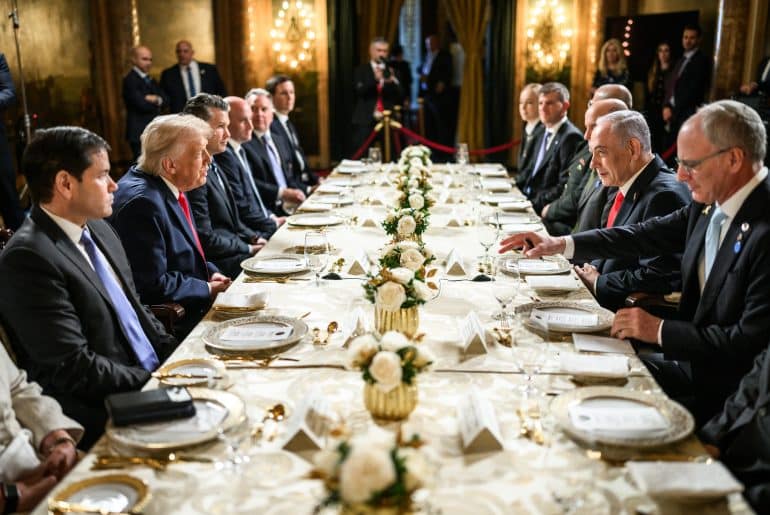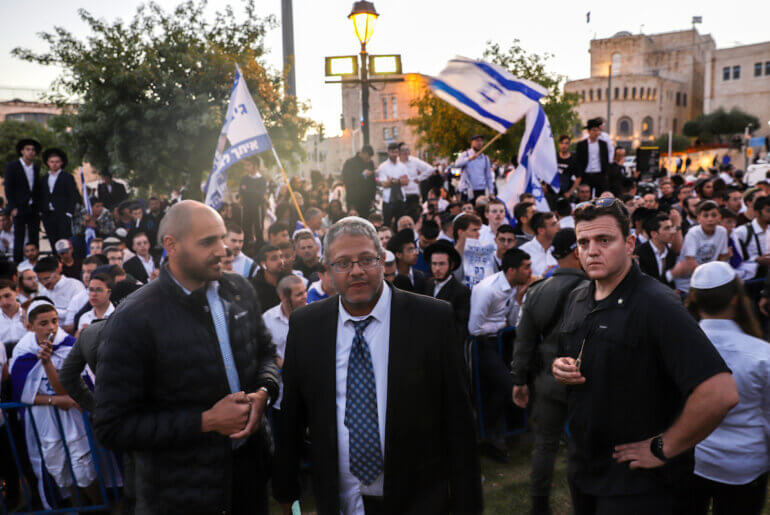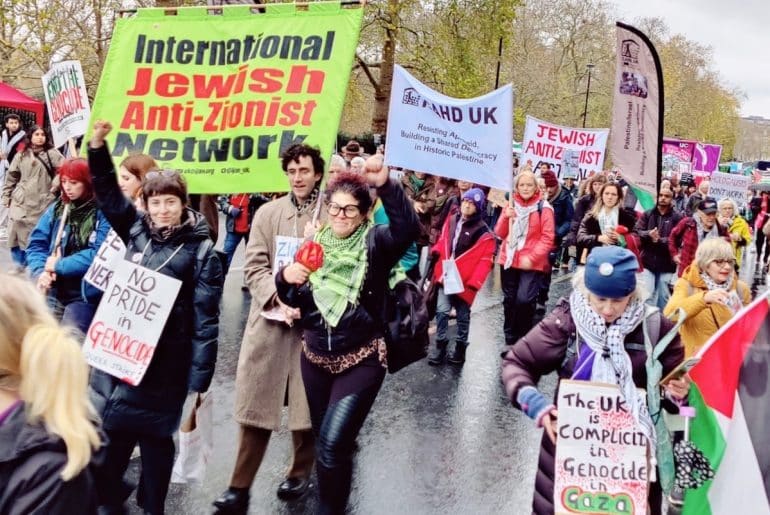Huda, or Um Eyad, mother of the slain 18-year-old resistance fighter Ibrahim al-Nablusi, sits next to her only daughter, and Ibrahim’s only sister, Shahd al-Nabulsi, 23.
Shahd’s navy dress contrasts with her clean purple headscarf. A stain rests underneath her palms, on the left side of her gown. Slightly darker than the rest of her dress, it felt out of place.
Um Eyad catches my gaze. “That’s Ibrahim’s blood, the stain,” she said. Just the day before, on August 9, Um Eyad lost her third-born child, Ibrahim, who didn’t make it to his 19th birthday in October.
That afternoon, the Gharbiyyeh cemetery of Khallet al-Amoud in Nablus was three bodies heavier. Ibrahim al-Nabulsi, Hussein Taha, and Islam Subuh lay there in rest. The three were killed in an Israeli military operation in coordination with Israeli intelligence on August 9 in the Old City of Nablus, in the northern occupied West Bank.
Um Eyad is now easily recognized, after Palestinian social media was inundated with an image of her cutting through the crowd of thousands, mostly men, who attended the funeral of the martyrs, moving towards the slain body of “the lion of Nablus.”
It was a different sight from the common images of men carrying the dead. She didn’t do it because it was the body of this new Palestinian icon — it was her son.
A congregation of bereaved mothers
On August 10, inside the small community hall in the Khallet Al-Amoud neighborhood of the Old City of Nablus, the women sat in black attire, which contrasted the bright white scarves on their heads. Their shoulders were covered in black and white Palestinian kuffiyehs to make it easier for those paying their respects to distinguish them from the rest of the crowd of mourning women.
The youngest of the martyrs, Hussein Taha, was only 16 years old when he was killed. His mother and sister sat next to Um Eyad, in tears and labored smiles to acknowledge the guests flocking in. The eldest of the martyrs, 32-year-old Islam Subuh, was also killed in the battle, an event now defining a new era in Palestinian armed resistance.
The room was full of mothers, wives, and sisters of Palestinian martyrs killed by the colonial regime. Buses of families of the martyrs in Jenin and other areas in the West Bank kept arriving on the scene. The young women from the small town of Khallet al-Amoud moved swiftly to serve coffee — a tradition of mourning in Palestine — and water to quench the thirst of mourners in the heat.
“I bought him a cap,” Shahd, 23, told Mondoweiss from the town hall just a few hundred meters away from their family home. It was only a day after the assassination of her brother, Ibrahim. Holding back her tears, Shahd laments that she was never able to give it to him. She takes a breath and whispers a prayer, “al-hamdulilah [praise be to God]” — a phrase denoting humility and gratitude for one’s fate, commonly repeated both in times of hardship and joy.
“He was so loved in his community,” al-Nabulsi’s aunt-in-law, Haifa, 41, told Mondoweiss. “He was also always defiant and stubborn. He grew up in these streets — they’re not very easy streets to grow up on, especially during your early development years.”
Ibrahim was born in 2003, in the middle of the Second Intifada, when his hometown of Nablus was constantly under siege by Israeli military.
Every year since his birth, more and more Palestinian kids just like him were killed and arrested by the Israeli army. Just last year, 2021, was documented to have been the deadliest for Palestinian children since 2014, due to Israeli assaults from settlers and the military.
Wedged within ancient walls
In the Old City, every turn and corner marks a story of a battle Palestinians fought against settlers or the Israeli army. If not that, the old walls are marked with newer stone, renovations after the partial destruction of the city during the invasions.
The Old City of Nablus is riddled with posters of killed Palestinians, from resistance fighters to children held at checkpoints. Freshly printed posters with photos of al-Nabulsi and his fallen comrades adorn the walls. Some banners seem older than al-Nabulsi himself, but as of August, the Faqous neighborhood in the Old City is now entangled with the story of the Palestinian ‘lion of Nablus.’
“Take a picture of me, take a picture of me,” one of the children says, calling my way as I move towards Al-Faqous neighborhood, searching for the remnants of the Israeli assault on August 9.
The child, with his dog Luka, poses with his friends. As the photographer snapped a picture, I noticed a necklace on the boy’s neck, a photo of another boy. The necklace resembled the same ones I saw on the necks of the women at the grieving hall earlier, images of their slain or imprisoned family members.
I asked who was in the photo. “My friend,” he said with a timid smile.
I initially assumed it would have been his father, brother, or uncle, because in Palestinian culture these necklaces are not merely to commemorate or showcase, but are clear testaments to the loss of a loved one at the hands of the occupation. I didn’t realize the photo was of another young boy.
The boy’s friend was Ghaith Yamin, the 16-year-old killed in Nablus with a gunshot wound to the head as he stood on his home’s rooftop near Jacob’s tomb, while the Israeli military raided the city on May 24 of this year.
Somehow, I felt the hostility which Haifa was referring to as she recalled al-Nabulsi’s childhood just a few hours earlier. The sheer violence witnessed by Palestinian children, youth, and adults across all backgrounds and in such diverse ways felt more potent as the kid tried to comfort Luka, who now was barking.
As the moon-rise peaked, the Khudari mosque in the Old City echoed the call to Maghrib prayer, “Allahu Akbar [God is Great].” An Islamic mantra which signifies humility, the alleyways rang with the reminder that only God is great, and the rest is just humanity. The golden light flickering just moments ago was gone, and the bullet-riddled door to where al-Nabulsi and Subuh were killed became invisible.
A group of men nearby were alert to my intrusion. Yet, if a tourist had passed by us, they wouldn’t have realized the crime that happened there just two nights before.
The stubborn cub
According to those who knew him, before becoming a resistance fighter, al-Nabulsi was a typical teenager who was at once just and fierce. The stories his aunt shared reminded me of many men, once boys, I met across the cities of Palestine. As a child al-Nabulsi is remembered as a ‘Nimrood,’ a term borrowed from the biblical story of Nimrod to signify the spirit of a rebel that refused to submit to authority.
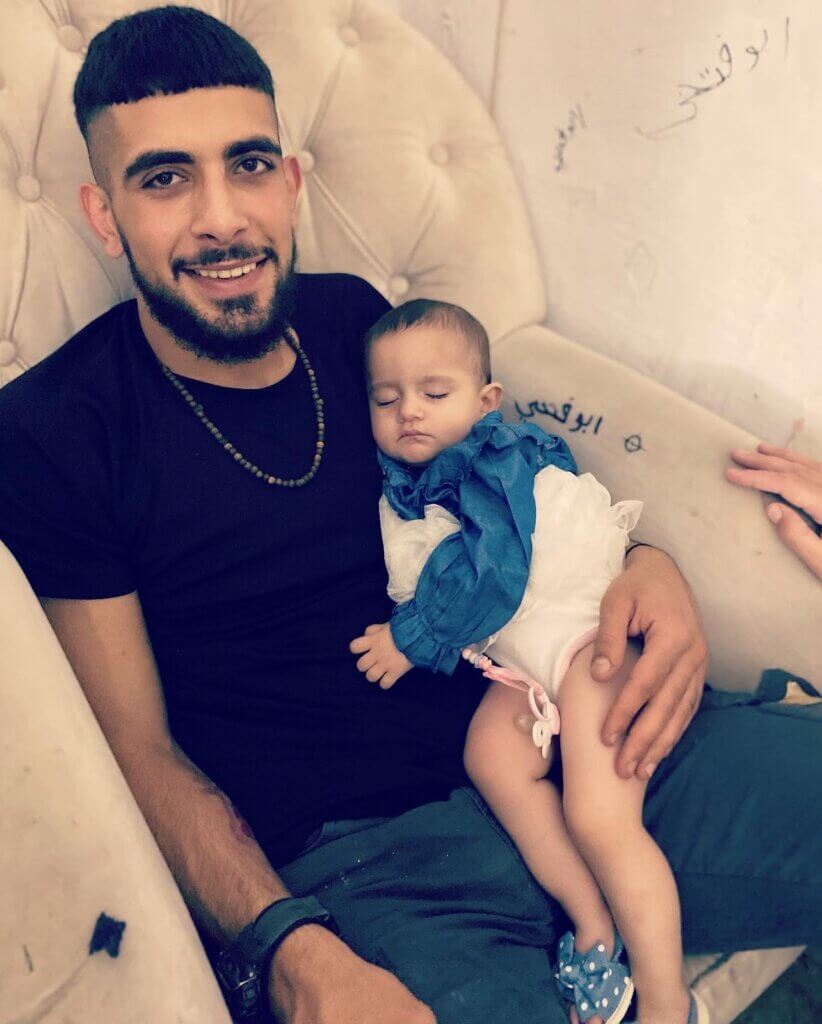
The alleyways of Al-Faqous and the rubble left by the Israeli military inside the building where al-Nabulsi was assassinated provoked memories of the 2002 aggressive invasions of the Israeli military in Nablus and Jenin.
In those days, the Old City was the target of a merciless military campaign of shelling and street skirmishes, harming not only Palestinian shelters, livelihoods, and people, but also destroying historical artifacts in one of the oldest cities in the world. It was also a time when Israeli authorities and ministers called for the infamous “open-fire” policy.
Almost exactly two decades later, the scene seemed familiar to the residents. The blood of al-Nabulsi, or perhaps Subuh, was splattered on the walls inside the demolished home, marking the site of their last stand. If we hadn’t used flashlights, it would have been difficult to see the scale of the crime. In one corner of what seems to have been used as a kitchen was a single bag of pita bread and a pan. Amid the blackened debris was the brown and bright yellow of an Aero chocolate bar, never opened.
When the Israeli cabinet was deciding on launching the onslaught of the early 2000s, its two-decade old statement still seems relevant today: “Israel will act to defeat the infrastructure of Palestinian terror in all its parts and components; to this end, broad action will be undertaken until this goal is secured.” In those years, entire cities were put under curfew, when people were only allowed to leave their homes to shop for essentials every three to four days during a designated hour.
The COVID-19 global pandemic has perhaps given the world a small glimpse of what it means to be forced to remain inside for extended periods of time, albeit without the constant threat of bombardment and death looming over you at every turn. In al-Nabulsi’s childhood, this was not only the norm — it was imposed by tanks and Israeli paramilitary troops, who later confessed to committing these war crimes.
Similar to the present day, Israeli ministers justified those crimes by extolling their capacity for deterring resistance activity. Yet over two decades later, the falsity of Israel’s claims is evident in the persistence of Palestinian resistance. This emphasizes that Israel’s military strategy has not only proven ineffective, but is an ambiguous employment of “national security” to conceal criminal policies of ethnic cleansing.
Ibrahim al-Nabulsi quickly became a legend in the Palestinian streets and among his generation, also born into the peak of the Second Palestinian Intifada. Palestinian resistance was met with tanks, missiles, and mass destruction. About one month before even being born, al-Nabulsi still in the womb, the Israeli military demolished a 7-story building as collective punishment, using heavy artillery on civilian homes. Just three years before that, an image of Faris Odeh, the child that confronted an Israeli military tank in Gaza, spread across the globe, representing the battle between the proverbial Palestinian David facing off against an imposing Israeli Goliath.
The early years of al-Nabulsi’s infancy coincided with the Israeli military crimes in Jenin refugee camp and Nablus between 2001-2004. Despite confirmation and extensive documentation, Israeli commanders and soldiers have not yet been held accountable.
At the time, the West Bank was also erupting with Palestinian armed resistance fighters. The Israeli regime launched Operation Defensive Shield in March 2002, and it bears a striking resemblance to its current campaign, launched exactly 20 years later in March of this year, Operation Break the Wave. It included Operation Breaking Dawn, the three-day onslaught on the Gaza Strip that killed scores of civilians, including children.
“They are mistaken if they think they killed Ibrahim. Everyone is Ibrahim.”
Um Eyad, mother of Ibrahim Al-Nabulsi
An official dispatch from the Israeli army phrased the “achievements” of Operation Defensive Shield in terms of the arrest of “many wanted terrorists,” and the seizure of “enormous quantities of weapons” from the Palestinian Authority (PA). This marked the period in which the Israeli strategy of systematically rooting out havens of Palestinian resistance led to the marginalization of armed groups like the Al-Aqsa Martyrs Brigade (Fatah’s military wing) within the West Bank’s political landscape. Al-Nabulsi reportedly became a member of that very same brigade, which despite the campaign of Israeli repression and collusion from the PA in disarming them, managed to survive and re-group, establishing a thriving if tenuous presence in places like Jenin and the Old City of Nablus.
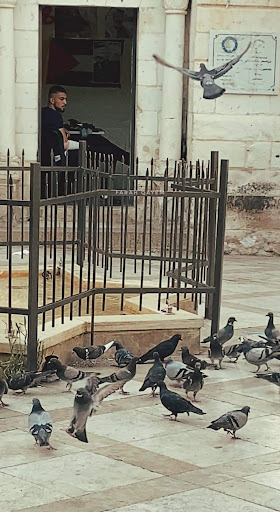
The words of al-Nabulsi’s mother, Um Eyad, still ring in my ears from when she said, “I don’t even want to afford them my tears. Ibrahim is a martyr, al-hamdulilah.” The words didn’t seem to genuinely console her heart, but at least they allowed for a placement of her grief on a hope for change.
After breaking into screams at the hospital as the doctor apologetically announced ‘istash-had [he was martyred],’ Um Eyad was later seen telling a throng of mourners: “they are mistaken if they think they killed Ibrahim. Everyone is Ibrahim.”
Watching those words, I thought of this woman’s strength, how she put aside her own pain to show everyone around her the true meaning of Ibrahim’s sacrifice. Then I said a silent prayer — for no mother to be put in the position of somehow finding the strength to carry the name of her slain son as a symbol.
Having covered several stories on the families of martyrs, and witnessing the grief of my own mother when her nephew was killed in the Second Intifada, I learned, by necessity, about a different kind of grief. It is not merely the loss of a son, a brother, a husband, a daughter, a sister, or a wife — it is the brutality of loss at the hands of a criminal regime. A mother once described it as resembling something like a constant burn in your heart.
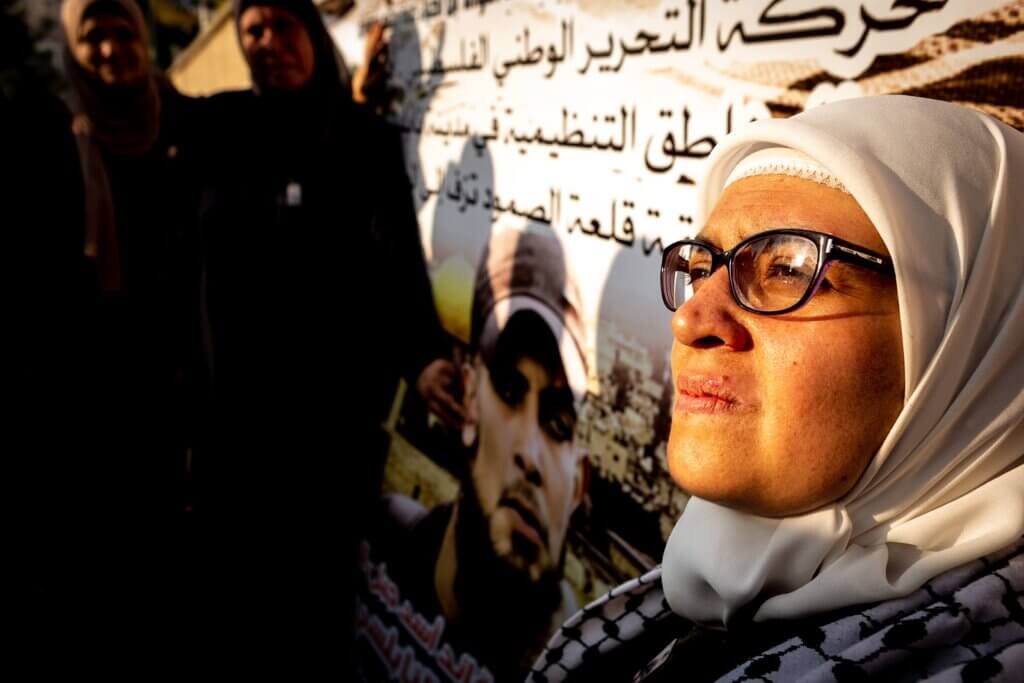
Never in hiding, Al-Nabulsi was entwined in his reality
“It was like a horror film, I just kept remembering the days of the invasion,” S., a neighbor near the site of the assassination told Mondoweiss. “He was so kind.”
She recalled the glimpses she saw of him walking through the Old City in his last months, as he escaped several Israeli assassination attempts.
“I still don’t believe it,” al-Nabulsi’s sister, Shahd, said as her toddler Mariam threw her scrawny body on the concrete stairs underneath her mother’s stained navy dress.
The Old City saw more of al-Nabulsi than his own family in the month leading up to his killing. “I’m sorry, I won’t come with you to the site [of the assassination],” Palestinian researcher and resident of the Old City of Nablus, Bassel Kittaneh, said from a rooftop facing the mosque closest to where al-Nabulsi was killed. He explained apologetically: “I’m not ready to see it yet.”
Days after the killing of al-Nabulsi, Taha, and Subuh, the quarters of the Old City were still bustling with life. Despite the terrible loss, there was a re-ignited flame of defiance that his character sparked. It was a show of reverence to the ability of someone as young as al-Nabulsi to summon forth the united might of one of the world’s most powerful security apparatuses, the General Security Services (Shin Bet) and the Israeli army, to plot his assassination.
According to witnesses and residents of the Old City of Nablus and neighboring towns, al-Nabulsi never really hid from sight. When he was seen walking, it was not necessarily with pride, but with a posture resembling someone bearing responsibility. Anyone in Palestine flipping through TikTok would find Nablus residents filming Nabulsi as he walked through the Old City, calling out his name and snapping selfies with him as he smiled, almost in embarrassment. It was almost as if they were saying goodbye, knowing that he would be martyred sooner or later.
“He was genuine and kind in his interactions,” said Kittaneh.
Yet despite the strength and defiance displayed in al-Nabulsi’s confrontation, it is questionable if al-Nabulsi posed the threat that Israeli media and military spokespersons made him out to be.
Instead, what Nabulsi represented — the threat of reigniting the spirit of armed resistance in the West Bank — was something Israel could not abide. Indeed, the Israeli military has been targeting Palestinians suspected of armed resistance and assassinating them extrajudicially ever since Operation Break the Wave started in February of this year.
What Nabulsi represented — the threat of reigniting the spirit of armed resistance in the West Bank — was something Israel was not prepared to let happen
UN officials and human rights organizations have constantly warned of the Israeli military’s recent intensification of its campaigns against Palestinians, even resorting to the illegal practice of administrative detention against human rights lawyers, and using lethal force against unarmed Palestinian protestors.
This comes as part of an “escalation dominance” strategy, a coercive approach to controlling escalations in a way that places the other party at a disadvantage and undercuts their ability to respond. Israeli intelligence and military units also green-lighted and revived a shoot-to-kill strategy across the West Bank. This came months before its onslaught on Gaza in the first week of August this year.
Yet amid the noise of Israel’s thirst for annexation and apartheid, Ibrahim Al-Nabulsi, not yet 19, bid farewell to the Old City of Nablus as he fought back, armed with nothing more than a rifle.
According to witnesses, Israel used shoulder-launch missiles to bomb his shelter apart, while bullet holes were sprawled across the metal door. Footage reported to be of al-Nabulsi shows a young man clumsily firing a gun during an earlier military invasion. With no formal military training and outdated weaponry, al-Nabulsi never had a chance.
The miracle was that despite the ruthless attack, somehow al-Nabulsi made it out of the destruction alive. The time of death was declared at the hospital about an hour later.
A lion’s roar for liberation
The rise of a new generation of armed Palestinian resistance seems to have created a counter-effect to what Israeli military and counter-intelligence hoped for in terms of “deterrence.”
“Even during the latest wave of rising resistance, we also saw the birth of new life in Nablus,” Kittaneh explained to Mondoweiss. “The Old City is regaining significance and its old sense of importance once more.”
Kittaneh served 15 years on charges of affiliation with the Palestinian Izz el-Din al-Qassam Brigades, the military wing of Hamas. He was arrested the same year in which al-Nabulsi was born. As the city of Nablus sprawls across the horizon behind him, Kittaneh reflects on his youth. “Every generation will respond differently, but every generation will respond,” he tells Mondoweiss.
To ensure escalation dominance, Israel has resorted to creating a collective shock-and-awe effect on Palestinians. This includes extra-judicial assassinations of Palestinians, like the dozens killed in the first half of this year, or the imprisonment of children as young as 12 years old.
This tactic, explained by award-winning journalist, Naomi Klein, ensures the infliction of emotional, mental, or physical damage incrementally across time, to slowly paralyze a population into inaction. “Shock wears off, but not when you expect it, like at the clean moment of liberation . . . shock labs live with the legacy of fear for years after,” Klein explained in an interview.
As agencies and reports hailed the young fighter as a “top commander” and “senior militant,” al-Nabulsi lived another life, one with his friends and family. “When we used to ask him why he kept going, he would reply, ‘I am reviving the spirit of resistance of an entire generation’,” Shahd told Mondoweiss. It seems that resistance continues to be fueled by a recognition that Palestinian childhood does not exist.
“What Israel didn’t take into account was that, when the people of the Old City witnessed the Israeli military entering and raiding Nablus in broad daylight, to arrest the youth or to assassinate them in such an ugly way…” Kittaneh trailed off as he said this, pausing for a moment before continuing. “This didn’t make people more scared. On the contrary, it pushed Palestinians towards confrontation even further.”
It became more evident that the depths of al-Nabulsi and Subuh’s defiance stemmed from a recognition that their childhood was stripped from them, from its very right to be. It reminds me of the images of children who, no matter how small and scrawny they were, somehow mustered the strength to confront soldiers, refusing to be terrorized by them.
A lullaby for the family
A little girl sleeps in her mother’s lap despite the heat of the Nablus mid-afternoon. Strange women enter and exit, hovering over her small body to pay respects to the three families that lost their sons, one who was only 16 years of age.
“Hayat,” an older woman tells me, as she points at the infant sleeping in her arms during the funeral. It was al-Nabulsi’s niece.
“Her name means life,” the woman said.
Whereas al-Nabulsi is celebrated as the “lion of Nablus,” he was also known as the young and rebellious uncle, the one who deviated from what he was told and remained committed to his freedom and the freedom of everyone around them, including Hayat.
A few days after his death, Ibrahim’s family gathered in their home in Nablus in the evening. Ibrahim’s aunt continued to lament her nephew’s absence from their lives. “When we sit on the table and Ibrahim’s chair is empty, we feel his distance,” she said forlornly. “And when somehow we find a moment of joy, we start saying, ‘if only Ibrahim was with us.’”
Mariam Barghouti
Mariam Barghouti is the Senior Palestine Correspondent for Mondoweiss.

